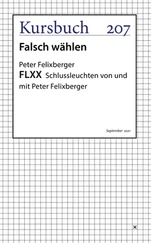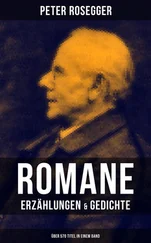“I had a feeling after that first good aftershock,” he said, staring at his folded hands. He was calming down and needed to talk, the words coming quickly. He mentioned the two grad students he’d asked to go out to his house to check on things. He glanced sideways at Atkins. “The kids got back yesterday. They had a hell of a trip. They had to go about ten miles out of their way because of fire and fallen buildings. When they finally got to my home, a neighbor who lives across the street told them what had happened. The guy had dug through the rubble and gotten to the back bedroom, or what was left of it. He found them just where I told them to go in a bad quake. They were in the bathroom right under the main floor joists. The strongest part of the house. The thing I never counted on was the entire brick wall caving in.”
WASHINGTON, D.C.
JANUARY 17
11:25 P.M.
THE PRESIDENT SUMMONED THE GROUP TO ORDER. He was in shirtsleeves, collar open wide, his eyes bleary with fatigue. He nodded to Steve Draper.
Stepping into the hallway, his national science adviser returned moments later with Fred Booker. The physicist carried the same blue backpack and wore the same red jumpsuit he’d had on when he parachuted into Memphis. He hadn’t changed clothes. There hadn’t been time. He’d flown to Washington on a military plane.
Introducing him to the group, Draper said, “Some of you have already met Doctor Booker. For those who haven’t, Fred’s a nuclear physicist at the Oak Ridge National Laboratory. He’s got some thoughts about the earthquakes.”
Atkins, Holleran, and the others were startled to see Booker. They hadn’t been told he’d been invited. Atkins glanced at Walt Jacobs, whose face had gone hard the moment Booker had entered the room. Atkins was already worried about his friend’s ability to cope with his tremendous personal grief and his responsibility as the lead seismologist at Memphis. He didn’t like the way he looked, especially now, seeing Booker standing in front of them.
Draper said, “Doctor Booker, why don’t you describe what you’ve got in mind.”
Obviously, Draper had already briefed the president on Booker’s ideas, Atkins realized. This was more than a courtesy call. His presence meant the president and Draper were seriously considering the physicist’s proposal to use a nuclear device to try to head off another big quake.
Booker quickly sketched out his thoughts. He’d lost nothing of his zeal. There’d been no major change since he’d described the procedure to them a few days earlier in Memphis. If anything, he’d become even more insistent.
“I believe a nuclear explosion, properly designed and positioned underground, can reduce the dangerous levels of seismic energy that have built on the fault,” he said.
“Where would you suggest detonating it?” the president asked.
“That depends on what the seismologists say,” Booker said. “From what I’ve heard, a plausible location might be near the point where your new fault, the one that starts around Caruthersville, Missouri, intersects with the previously known fault segment in western Kentucky. I’m told seismic stress generally builds at the ends of a fault. I’d suggest it might make a good target.”
“Mister President, this is insane,” said Paul Weston, who’d almost come out of his chair as soon as he realized what Booker was suggesting. “A nuclear explosion anywhere near that fault could be catastrophic.” Other seismologists in the room also objected. There were angry shouts as several tried to speak at once.
The president silenced them, slamming the flat of his hand on a desktop. “I don’t give a damn if you think it’s insane. I just want to know if it has the slightest chance in hell of working. Because right now, I don’t see any other options. If you have one, any of you, I want to hear it.”
Ross knew he’d almost lost it. That wouldn’t do. Would never do. Not even a momentary lapse. If he was going to make this work, he had to be absolutely in control of his emotions.
Still tense, but in control of his voice, Ross said, “After listening to Doctor Holleran, it’s obvious to me—and it should be to you—that we’re probably going to have at least one major earthquake, maybe more, sometime in the near future. I want to do anything I can to prevent that. So I’ll listen to anybody who puts a serious proposal on the table. And I’ve got to tell you this—I’d consider setting off a hundred nuclear weapons if I thought it would spare the country from going through this nightmare twice.”
“It might work,” said Guy Thompson. He looked genuinely intrigued by Booker’s idea. “It’s conceivable that we could selectively reduce some of the strain energy. And I’d agree with the Caruthersville fault as a target. That’s the critical point, the segment that’s showing the greatest concentration of stress. We can run some projections to see if the data supports that location.”
“The idea is to see if we can get a moderate quake without triggering a big one,” Booker said. “I can guarantee I can produce an earthquake. It’s up to you people to tell me how big you want it.”
“So you can explode a bomb, and that means we should listen to you on something this incredibly complex,” Weston said. He looked furious.
“Doctor Weston, I think you better listen to somebody because we’re way out of options, and we could be out of time,” Booker snapped. He knew belter, but couldn’t help himself. He was starting to get in a fighting mood.
“What about you, John?” Draper asked, choosing to ignore the exchange. “You’ve had some time to think about this.”
Atkins had anticipated the question as soon as he saw Booker enter the room. The president was right. They had to try something. They couldn’t just sit there and take all the horrible consequences of another magnitude 8 earthquake if there was even the slightest chance it could be averted. He also knew that Thompson was entirely correct. Stress would be concentrated at the end, or tip, of the fault and would continue to build there until it loaded up the adjoining fault segments with stress. A kind of seismic fusebox, it was the only logical target.
“We’ll need to run some numbers before we settle on the exact location and depth for an explosion,” Atkins said. “And I’d want to find out as much as I could about the kinds of seismic waves nuclear explosions produce.”
Holleran agreed. The location was critical. So was the size of the nuclear device. If they used one too big, it would be a disaster. “If we make a mistake, we could wind up overloading the fault with stress energy and possibly trigger a chain reaction,” she said. “I’ve never seen a fault system that’s so tightly interlocked.”
“But you think it might work?” the president asked.
Holleran paused, carefully weighing her response. “It might, in theory,” she said.
“But what about here and now?” Ross persisted.
“I’m not sure,” Holleran said. “There are so many variables, so many unknowns. But even taking that into consideration, I can’t see that we have any choice. If we’re in a multiple quake pattern—and I think we are—there aren’t many alternatives.” At least she couldn’t think of any, and with all her heart, she wished she could. Booker was proposing a huge gamble, rolling the dice with the most powerful natural forces known to man. Still.
“If we do nothing, we’re going to get hit again,” she said. “Possibly harder than any of us can imagine. We have to try something.”
“But what if it doesn’t work?” Weston said, refusing to be cowed. “What if it sets off Armageddon?” There were immediate loud shouts of agreement. Most of the people in the room were shocked by what had been proposed, outraged that it was even being discussed.
Читать дальше












